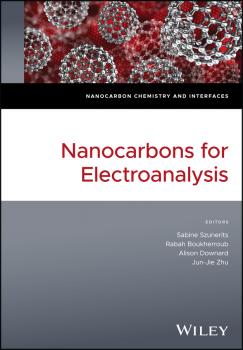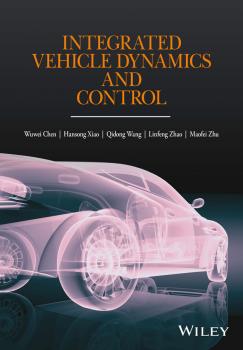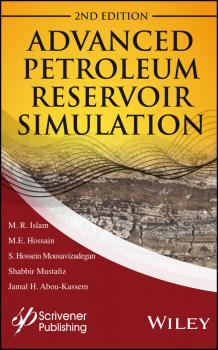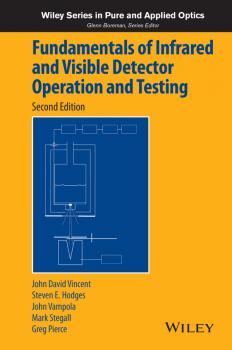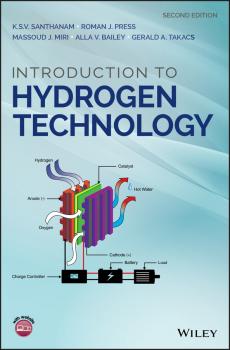Техническая литература
Различные книги в жанре Техническая литератураEvent-Based Neuromorphic Systems
Neuromorphic electronic engineering takes its inspiration from the functioning of nervous systems to build more power efficient electronic sensors and processors. Event-based neuromorphic systems are inspired by the brain's efficient data-driven communication design, which is key to its quick responses and remarkable capabilities. This cross-disciplinary text establishes how circuit building blocks are combined in architectures to construct complete systems. These include vision and auditory sensors as well as neuronal processing and learning circuits that implement models of nervous systems. Techniques for building multi-chip scalable systems are considered throughout the book, including methods for dealing with transistor mismatch, extensive discussions of communication and interfacing, and making systems that operate in the real world. The book also provides historical context that helps relate the architectures and circuits to each other and that guides readers to the extensive literature. Chapters are written by founding experts and have been extensively edited for overall coherence. This pioneering text is an indispensable resource for practicing neuromorphic electronic engineers, advanced electrical engineering and computer science students and researchers interested in neuromorphic systems. Key features: Summarises the latest design approaches, applications, and future challenges in the field of neuromorphic engineering. Presents examples of practical applications of neuromorphic design principles. Covers address-event communication, retinas, cochleas, locomotion, learning theory, neurons, synapses, floating gate circuits, hardware and software infrastructure, algorithms, and future challenges.
Nanocarbons for Electroanalysis
A comprehensive look at the most widely employed carbon-based electrode materials and the numerous electroanalytical applications associated with them. A valuable reference for the emerging age of carbon-based electronics and electrochemistry, this book discusses diverse applications for nanocarbon materials in electrochemical sensing. It highlights the advantages and disadvantages of the different nanocarbon materials currently used for electroanalysis, covering the electrochemical sensing of small-sized molecules, such as metal ions and endocrine disrupting chemicals (EDCs), as well as large biomolecules such as DNA, RNA, enzymes and proteins. A comprehensive look at state-of-the-art applications for nanocarbon materials in electrochemical sensors Emphasizes the relationship between the carbon structures and surface chemistry, and electrochemical performance Covers a wide array of carbon nanomaterials, including nanocarbon films, carbon nanofibers, graphene, diamond nanostructures, and carbon-dots Edited by internationally renowned experts in the field with contributions from researchers at the cutting edge of nanocarbon electroanalysis Nanocarbons for Electroanalysis is a valuable working resource for all chemists and materials scientists working on carbon based-nanomaterials and electrochemical sensors. It also belongs on the reference shelves of academic researchers and industrial scientists in the fields of nanochemistry and nanomaterials, materials chemistry, material science, electrochemistry, analytical chemistry, physical chemistry, and biochemistry.
Attainable Region Theory. An Introduction to Choosing an Optimal Reactor
Learn how to effectively interpret, select and optimize reactors for complex reactive systems, using Attainable Region theory Teaches how to effectively interpret, select and optimize reactors for complex reactive systems, using Attainable Region (AR) theory Written by co-founders and experienced practitioners of the theory Covers both the fundamentals of AR theory for readers new to the field, as we all as advanced AR topics for more advanced practitioners for understanding and improving realistic reactor systems Includes over 200 illustrations and 70 worked examples explaining how AR theory can be applied to complex reactor networks, making it ideal for instructors and self-study Interactive software tools and examples written for the book help to demonstrate the concepts and encourage exploration of the ideas
Integrated Vehicle Dynamics and Control
A comprehensive overview of integrated vehicle system dynamics exploring the fundamentals and new and emerging developments This book provides a comprehensive coverage of vehicle system dynamics and control, particularly in the area of integrated vehicle dynamics control. The book consists of two parts, (1) development of individual vehicle system dynamic model and control methodology; and (2) development of integrated vehicle dynamic model and control methodology. The first part focuses on investigating vehicle system dynamics and control according to the three directions of vehicle motions, including longitudinal, vertical, and lateral. Corresponding individual control systems, e.g. Anti-lock Brake System (ABS), Active Suspension, Electric Power Steering System (EPS), are introduced and developed respectively. Particular attention is paid in the second part of the book to develop integrated vehicle dynamic control system. Integrated vehicle dynamics control system is an advanced system that coordinates all the chassis control systems and components to improve the overall vehicle performance including safety, comfort, and economy. Integrated vehicle dynamics control has been an important research topic in the area of vehicle dynamics and control over the past two decades. The research topic on integrated vehicle dynamics control is investigated comprehensively and intensively in the book through both theoretical analysis and experimental study. In this part, two types of control architectures, i.e. centralized and multi-layer, have been developed and compared to demonstrate their advantages and disadvantages. Integrated vehicle dynamics control is a hot topic in automotive research; this is one of the few books to address both theory and practice of integrated systems Comprehensively explores the research area of integrated vehicle dynamics and control through both theoretical analysis and experimental study Addresses a full range of vehicle system topics including tyre dynamics, chassis systems, control architecture, 4 wheel steering system and design of control systems using Linear Matrix Inequality (LMI) Method
Ultrasound in Food Processing. Recent Advances
Part I: Fundamentals of ultrasound This part will cover the main basic principles of ultrasound generation and propagation and those phenomena related to low and high intensity ultrasound applications. The mechanisms involved in food analysis and process monitoring and in food process intensification will be shown. Part II: Low intensity ultrasound applications Low intensity ultrasound applications have been used for non-destructive food analysis as well as for process monitoring. Ultrasonic techniques, based on velocity, attenuation or frequency spectrum analysis, may be considered as rapid, simple, portable and suitable for on-line measurements. Although industrial applications of low-intensity ultrasound, such as meat carcass evaluation, have been used in the food industry for decades, this section will cover the most novel applications, which could be considered as highly relevant for future application in the food industry. Chapters addressing this issue will be divided into three subsections: (1) food control, (2) process monitoring, (3) new trends. Part III: High intensity ultrasound applications High intensity ultrasound application constitutes a way to intensify many food processes. However, the efficient generation and application of ultrasound is essential to achieving a successful effect. This part of the book will begin with a chapter dealing with the importance of the design of efficient ultrasonic application systems. The medium is essential to achieve efficient transmission, and for that reason the particular challenges of applying ultrasound in different media will be addressed. The next part of this section constitutes an up-to-date vision of the use of high intensity ultrasound in food processes. The chapters will be divided into four sections, according to the medium in which the ultrasound vibration is transmitted from the transducers to the product being treated. Thus, solid, liquid, supercritical and gas media have been used for ultrasound propagation. Previous books addressing ultrasonic applications in food processing have been based on the process itself, so chapters have been divided in mass and heat transport, microbial inactivation, etc. This new book will propose a revolutionary overview of ultrasonic applications based on (in the authors’ opinion) the most relevant factor affecting the efficiency of ultrasound applications: the medium in which ultrasound is propagated. Depending on the medium, ultrasonic phenomena can be completely different, but it also affects the complexity of the ultrasonic generation, propagation and application. In addition, the effect of high intensity ultrasound on major components of food, such as proteins, carbohydrates and lipids will be also covered, since this type of information has not been deeply studied in previous books. Other aspects related to the challenges of food industry to incorporate ultrasound devices will be also considered. This point is also very important since, in the last few years, researchers have made huge efforts to integrate fully automated and efficient ultrasound systems to the food production lines but, in some cases, it was not satisfactory. In this sense, it is necessary to identify and review the main related problems to efficiently produce and transmit ultrasound, scale-up, reduce cost, save energy and guarantee the production of safe, healthy and high added value foods.
Advanced Petroleum Reservoir Simulation. Towards Developing Reservoir Emulators
This second edition of the original volume adds significant new innovations for revolutionizing the processes and methods used in petroleum reservoir simulations. With the advent of shale drilling, hydraulic fracturing, and underbalanced drilling has come a virtual renaissance of scientific methodologies in the oil and gas industry. New ways of thinking are being pioneered, and Dr. Islam and his team have, for years now, been at the forefront of these important changes. This book clarifies the underlying mathematics and physics behind reservoir simulation and makes it easy to have a range of simulation results along with their respective probability. This makes the risk analysis based on knowledge rather than guess work. The book offers by far the strongest tool for engineers and managers to back up reservoir simulation predictions with real science. The book adds transparency and ease to the process of reservoir simulation in way never witnessed before. Finally, No other book provides readers complete access to the 3D, 3-phase reservoir simulation software that is available with this text. A must-have for any reservoir engineer or petroleum engineer working upstream, whether in exploration, drilling, or production, this text is also a valuable textbook for advanced students and graduate students in petroleum or chemical engineering departments.
Metallic Biomaterials. New Directions and Technologies
With its comprehensive coverage of recent progress in metallic biomaterials, this reference focuses on emerging materials and new biofunctions for promising applications. The text is systematically structured, with the information organized according to different material systems, and concentrates on various advanced materials, such as anti-bacterial functionalized stainless steel, biodegradable metals with bioactivity, and novel structured metallic biomaterials. Authors from well-known academic institutes and with many years of clinical experience discuss all important aspects, including design strategies, fabrication and modification techniques, and biocompatibility.
Fundamentals of Infrared and Visible Detector Operation and Testing
Presents a comprehensive introduction to the selection, operation, and testing of infrared devices, including a description of modern detector assemblies and their operation This book discusses how to use and test infrared and visible detectors. The book provides a convenient reference for those entering the field of IR detector design, test or use, those who work in the peripheral areas, and those who teach and train others in the field. Chapter 1 contains introductory material. Radiometry is covered in Chapter 2. The author examines Thermal detectors in Chapter 3; the “Classical” photon detectors – simple photoconductors and photovoltaics in Chapter 4; and “Modern Photon Detectors” in Chapter 5. Chapters 6 through 8 consider respectively individual elements and small arrays of elements the “readouts” (ROICs) used with large imaging arrays; and Electronics for FPA Operation and Testing. The Test Set and The Testing Process are analyzed in Chapters 9 and 10, with emphasis on uncertainty and trouble shooting. Chapters 11 through 15 discuss related skills, such as Uncertainty, Cryogenics, Vacuum, Optics, and the use of Fourier Transforms in the detector business. Some highlights of this new edition are that it Discusses radiometric nomenclature and calculations, detector mechanisms, the associated electronics, how these devices are tested, and real-life effects and problems Examines new tools in Infrared detector operations, specifically: selection and use of ROICs, electronics for FPA operation, operation of single element and very small FPAs, microbolometers, and multi-color FPAs Contains five chapters with frequently sought-after information on related subjects, such as uncertainty, optics, cryogenics, vacuum, and the use of Fourier mathematics for detector analyses Fundamentals of Infrared and Visible Detector Operation and Testing, Second Edition, provides the background and vocabulary necessary to help readers understand the selection, operation, and testing of modern infrared devices.
Introduction to Hydrogen Technology
Introduces the field of hydrogen technology and explains the basic chemistry underlying promising and innovative new technologies This new and completely updated edition of Introduction to Hydrogen Technology explains, at an introductory level, the scientific and technical aspects of hydrogen technology. It incorporates information on the latest developments and the current research in the field, including: new techniques for isolating and storing hydrogen, usage as a fuel for automobiles, residential power systems, mobile power systems, and space applications. Introduction to Hydrogen Technology, Second Edition features classroom-tested exercises and sample problems. It details new economical methods for isolating the pure hydrogen molecule. These less expensive methods help make hydrogen fuel a very viable alternative to petroleum-based energy. The book also adds a new chapter on hydrogen production and batteries. It also provides in-depth coverage of the many technical hurdles in hydrogen storage. The developments in fuel cells since the last edition has been updated. Offers new chapters on hydrogen production, storage, and batteries Features new sections on advanced hydrogen systems, new membranes, greenhouse gas sensors and updated technologies involving solar and wind energies Includes problems at the end of the Chapters, as well as solutions for adopters This book is an introduction to hydrogen technology for students who have taken at least one course in general chemistry and calculus; it will also be a resource book for scientists and researchers working in hydrogen-based technologies, as well as anyone interested in sustainable energy.
Biopolymer Nanocomposites. Processing, Properties, and Applications
Sets forth the techniques needed to create a vast array of useful biopolymer nanocomposites Interest in biopolymer nanocomposites is soaring. Not only are they green and sustainable materials, they can also be used to develop a broad range of useful products with special properties, from therapeutics to coatings to packaging materials. With contributions from an international team of leading nanoscientists and materials researchers, this book draws together and reviews the most recent developments and techniques in biopolymer nano-composites. It describes the preparation, processing, properties, and applications of bio- polymer nanocomposites developed from chitin, starch, and cellulose, three renewable resources. Biopolymer Nanocomposites features a logical organization and approach that make it easy for readers to take full advantage of the latest science and technology in designing these materials and developing new products and applications. It begins with a chapter reviewing our current understanding of bionanocomposites. Next, the book covers such topics as: Morphological and thermal investigations of chitin-based nanocomposites Applications of starch nanoparticle and starch-based bionanocomposites Spectroscopic characterization of renewable nanoparticles and their composites Nanocellulosic products and their applications Protein-based nanocomposites for food packaging Throughout the book, detailed case studies of industrial applications underscore the unique challenges and opportunities in developing and working with biopolymer nanocomposites. There are also plenty of figures to help readers fully grasp key concepts and techniques. Exploring the full range of applications, Biopolymer Nanocomposites is recommended for researchers in a broad range of industries and disciplines, including biomedical engineering, materials science, physical chemistry, chemical engineering, and polymer science. All readers will learn how to create green, sustainable products and applications using these tremendously versatile materials.

